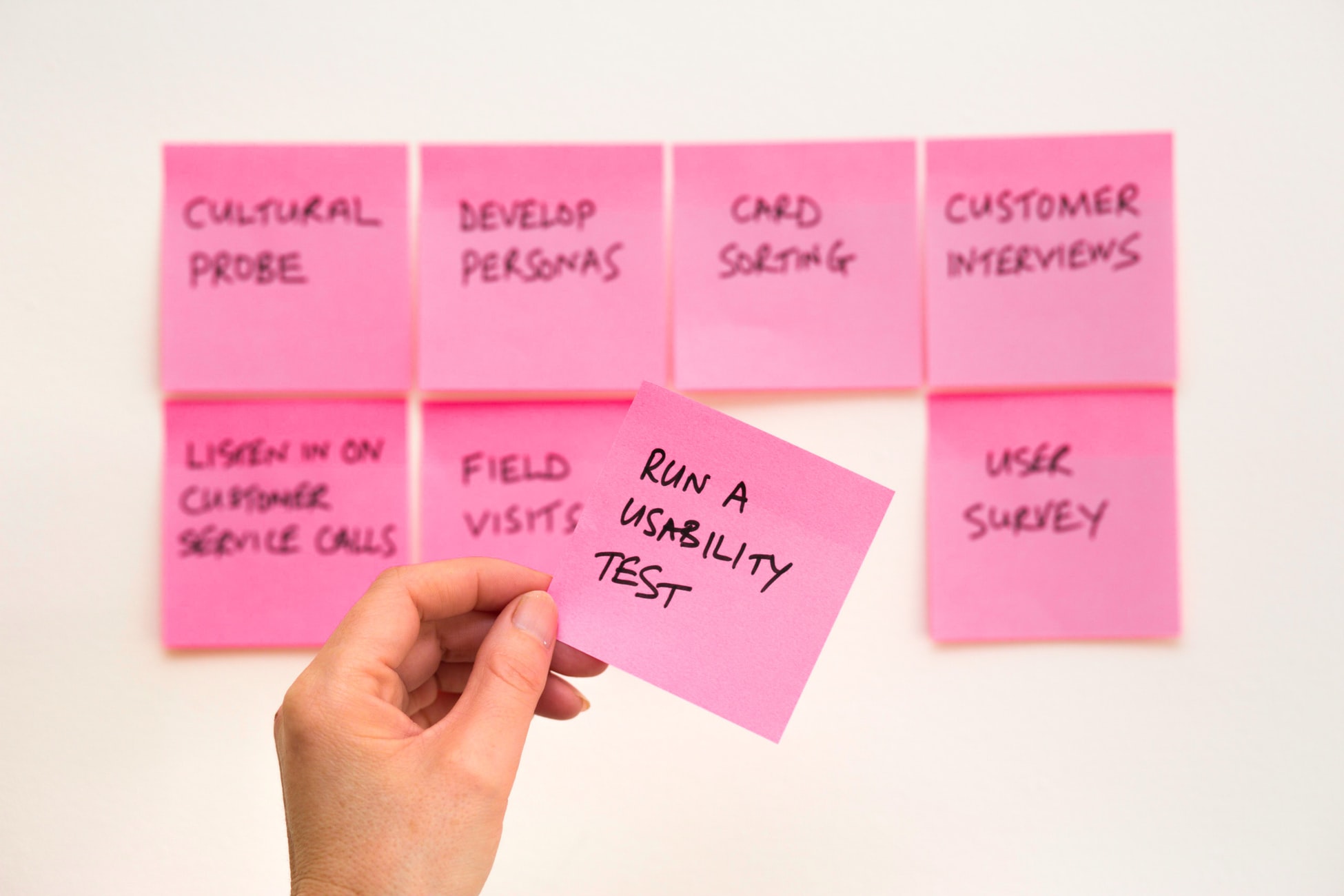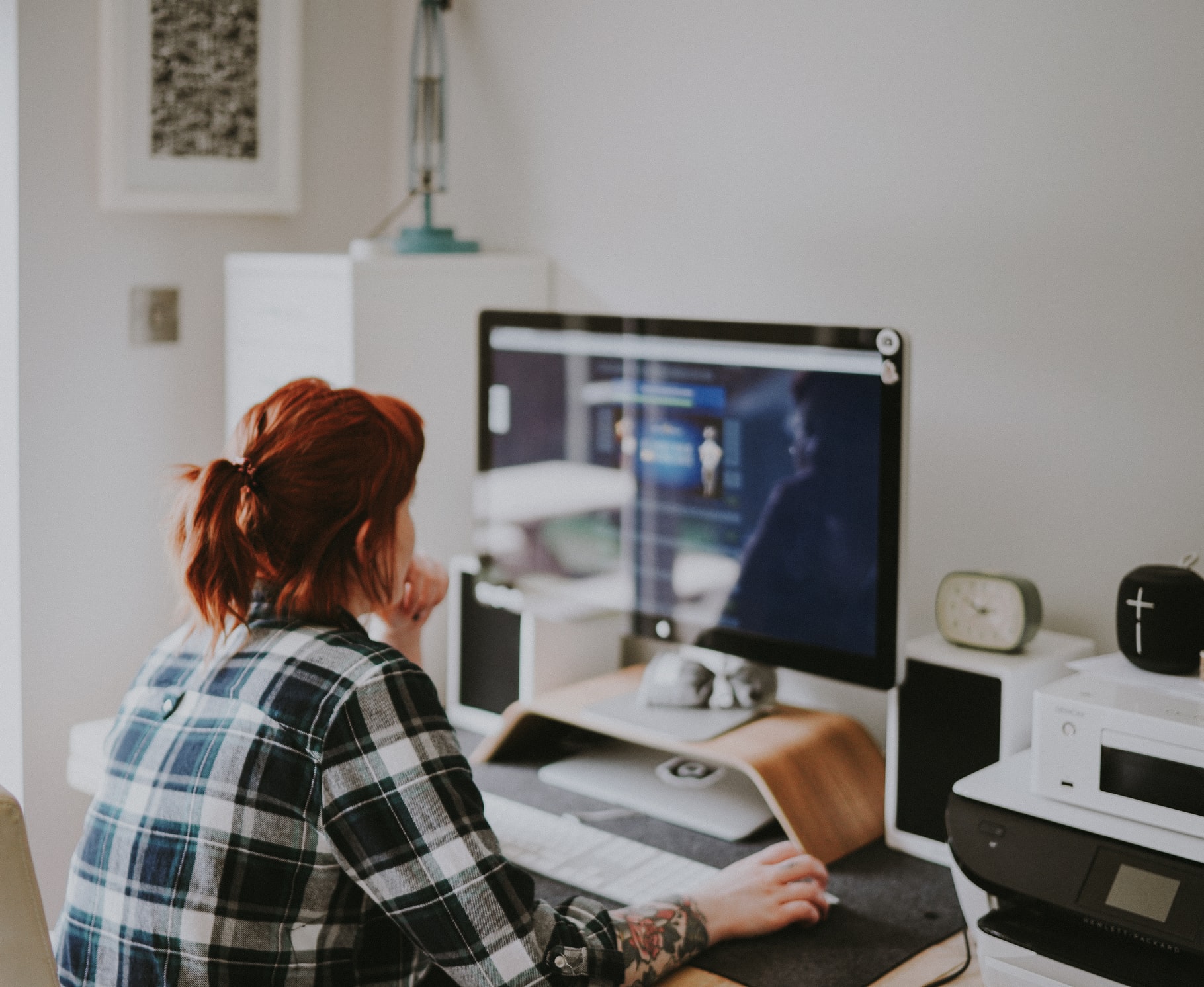Usability testing is a powerful technique that helps you to test a product among a set of participants. This test helps to evaluate the product in terms of both user experience and functionality and highlights any shortcomings that need to be resolved before developing and launching the product.
There are three key elements of a usability test: participants, tasks, and facilitator/moderator. Participants are the users who will be testing the product by performing the assigned tasks and a moderator helps to conduct the test and resolve any impediments that participants can face during the test.
The moderator observes the participants how they are using the product and records their responses and actions that help to build the usability testing report.
Usability testing helps to improve the usability and user experience of a product in the following ways.
It identifies the users’ pain points that need a revision in terms of usability
It provides a list of improvements for consideration
It gives an idea of user behavior when they are using the product
Skipping the usability testing step in the software development lifecycle can lead to a product that may not fulfill the user requirements. Usability testing plays an important role in knowing the required improvements that should be made in the product before delivering it to the client.
There are different types of usability testing as mentioned below.

The moderated testing requires a moderator/supervisor that can run the usability test. He/she needs to elaborate the test to participants, answer their questions, and resolve any issues that participants face during the test.
The unmoderated testing covers a more specific topic or task where participants are required to complete the task without any help. There is no supervisor or moderator available that can provide support to the participants.
Which to choose?
It is better to go towards the moderated approach when you need to observe users closely and ask questions and reasoning behind their actions.
It is also noted that the moderated usability testing requires an expert moderator that makes it expensive as compared to unmoderated testing.
Use the unmoderated testing for specific tasks where participants know about the requirements and they don’t need support to clarify the objectives of tasks.
The remote usability testing involves participants from different remote locations. Participants are sitting anywhere in the world using their own equipment and devices to test the given tasks and features. Remote usability testing can be done over the internet or a phone call.
Whereas in-person testing requires a moderator that can run the testing process among participants sitting at the same physical location. The moderator and participants can see, observe, and interact with each other.
Which to choose?
Choose the remote usability testing approach when you want a group of participants from different regions to test your product.
Remote usability testing makes it harder to observe your participants or ask questions from them during the test. You must be more specific in terms of given tasks and their details.
In-person testing results in better outcomes as you have multiple ways of accessing data. The moderator observes the participants, listens to them, and collects feedback in-person.
In-person testing is expensive as compared to remote testing as it requires a physical location, desired equipment, and devices, and a suitable time slot to complete the testing process.
There are two sub-type of remote usability testing that are discussed briefly below.
A remote usability testing can be conducted by an experienced moderator where participants are given a set of tasks as well as a common time slot. Both participants and moderators connect through the internet or phone and run the test. The participants can share their screens or live videos and the moderator administers the test. He/she can observe the participants, ask questions, and collect data.
Unmoderated remote testing can be conducted using an online testing tool where participants are given a set of tasks and they can perform them using the product on their own time. Screen recordings can also be done that can be shared later to observe the users’ actions.
Explorative usability testing is done at the early design stage of the product where participants are asked to explore different design ideas and identify any gaps. Based on this feedback, it is decided which features should be made part of the product.
Comparative testing on the other hand is done to compare a website or product with another product and identify the positive and negative things in both products.
Which to choose?
Go towards explorative testing when your product is at the early stages of development and you want some new ideas and opinions from the participants. This will help you to identify the market demands that you should focus on while designing your product.
Comparative testing is good when you have multiple options and you want to decide which one is better to follow with a group of real users based on their needs and requirements.
A number of methods can be followed to conduct usability testing. A detail of commonly used methods is given below.

Lab usability testing method involves a moderator, a limited number of participants, a set of observers, a laboratory environment where the test can be conducted, and the required number of devices including computers and mobiles.
In this method, the moderator administers the test and provides the participants with a list of tasks they need to perform using the given product. The moderator role is very important, and he needs to provide his support to participants, however, he is not supposed to guide them on how they should proceed with their tasks. The observers usually sit in an adjacent place separated by a mirror and they keenly observe the participants.
This testing method is expensive as you need to reserve a space and recruit required participants as well as find an experienced moderator.
The results of lab usability testing are detailed, and data is collected about user behavior, their reaction to tasks, and the way they follow to reach their goals. You can use these findings to address the users’ pain points and improve your product in terms of usability and user experience.
The Guerrilla testing method allows you to find participants randomly and request them to test your product. You need to identify the specific tasks that you want to test and elaborate on them to your participants. They usually give you their 5-10 minutes and provide you the required feedback after performing their tasks.
This type of method is quick and does not require you to set up a session to get feedback from participants.
At the same time, this is one of the cheapest methods of usability testing, where you do not require to recruit your participants, however, due to this, you can expect low-quality results.
It is better to use this method in testing the products that are more related to common users. If you want to test a product that belongs to a certain group of users only, the Guerrilla usability testing may not provide you the desired results as participants will not understand the purpose of the product and thus not able to give proper feedback.
Card sorting is a simple method of getting user feedback. This method involves several cards, say 30 to 40, listing different concepts of the product to be tested. The participants are required to sort these concepts into categories and name those categories.
After doing this, the moderator asks the participants why they have arranged the card in this way, thus knowing the logical reasoning behind their thinking. This testing mainly shows the layout and navigation of the product that the participants want to see. This helps to identify what flow of the product will work best for the users.
This method is mainly done while working on the information architecture of the product when designers are deciding the content and its organization on the interface. And the results help to define the layout and navigation of the product.

The following steps are required to conduct a successful usability test.
Planning is the most important step in the process. Plan your test properly as the remaining steps are dependent on how you plan at this stage. Before initiating the test, make sure that the part of the design in the form of a prototype or a working product is ready for testing.
Identify the goal of testing: Identify the goal you want to achieve from this exercise. Do you want to improve your product based on user feedback? Do you want to study the behavior of real users?
Define the problem you want to test: What kind of problems will help you get more from your participants and will be more beneficial for you to make design decisions.
With whom it is tested: Identify the number of participants required to perform these tasks. Focus on real users and identify the participants that closely match with real users.
Decide about the method: Decide about the method you will use to conduct the testing. Whether you will observe the users, record their interactions, or interview them to get their feedback.
Decide on a Location: Reserve a lab for testing where users can perform the tasks comfortably without any interruptions.
Equipment Availability: Make sure the required equipment is available for testing including computers, mobiles, seating etc. Also, if the session needs to record, the recording arrangements should be well managed before time.
Before starting this step, you will have an idea of the test that you are going to conduct. It will help you to identify the type of participants required for the test.
Look for participants that match closely with the real users: For this purpose, if you have a product or a website, find your real users from there. Ask your clients to provide you the users that can test your product.
Interview the participants: Selecting the right participants is the key to success for the usability test. The most appropriate participants you select, the most accurate and useful feedback will you receive. Follow the recruiting process and know about their habits and interests and then finalize the participants based on the collected input.
Don’t forget to reward your participants: Since you are hiring the participants for testing of your product, decide on some amount, or a personal favor that you are going to provide them for their time and input.
Defining the tasks and scenarios that you are going to test with your participants is an important step of the test preparation.
Identify the most frequently accessed tasks: The most frequent tasks are the most important to test. Identify these tasks and prioritize them as per their expected frequency with which the user is going to perform them.
Define scenarios: Instead of giving them one task after another, identify a situation, and define scenarios for the users to perform in that situation. A single scenario can cover multiple tasks in a flow and will help you better evaluate the participants’ actions throughout the flow.
When the test day and time arrives, welcome your participants and start running the test. The moderator needs to introduce himself and get to know about participants and start the test in a pleasant environment.
Start with the first task: The moderator needs to give the participants an overview of the task they need to perform. Provide them the necessary details and make sure they can start the task with the provided equipment without any delays.
Do not instruct them about the task and the flow they need to follow. However, make sure to remain available for any queries and resolve them in the best possible way.
Observe and take notes: When the participants are working on the assigned tasks, observe their behaviors and actions. Try to understand the body language as it can help you to note their emotions and identify their likes and dislikes. Note that your observation can give you correct input as compared to what they said when you ask them questions.
Interview and take notes: After or during the task, you can ask users for their feedback about a feature or user flow. It is better to keep this Q/A session after the task is done as during the task it can cause interruption. Ask questions that help users to get their input freely and do not try to bias their opinion by mentioning your opinions.
Wrap-up the session: After completing all the planned tasks, the moderator can ask the participants about their overall experience with the product. Listen and note their feedback carefully. Don’t forget to pay your thanks to the participants before leaving the room.
When you are done with the test exercise, the next step is to organize the collected data, analyze your findings, identify the required improvements, and prioritize them based on their need and importance.
Organize data: At this point, you will have the collected data in different formats like notes, recordings, action points, etc. There is a need to organize this data and go through it. Compile your notes and observations, listen and watch the recordings, and capture data from them.
Build usability testing report: Collect data and your findings in a report that best describes the purpose of the test, how it was conducted, what are your findings, and what you achieved from this exercise. Prepare this report to be presented in front of relevant stakeholders and conclude with the decisions.
Prioritize improvements: Usability testing results in a list of improvements to be made in the product. The next step is to make these improvements part of your product backlog and prioritize them with defined levels like Must have, Should have, Good to have features.
 Several mistakes can occur during each step of the usability testing. The below-mentioned list shows a set of common mistakes and the ways that can be followed to avoid them.
Several mistakes can occur during each step of the usability testing. The below-mentioned list shows a set of common mistakes and the ways that can be followed to avoid them.
Proper planning is a pre-requisite of successful usability testing. If you do not have a clear purpose for the testing in your mind, this exercise will not give you the desired outcomes. Selecting incorrect tasks that you ask participants to perform and not finding the right type of audience are very common mistakes that can lead a usability test to failure.
Spend time for the planning step. Understand the goal that you want to achieve from this exercise. Prioritize tasks that will help you to read the behavior of your participants. Recruit your participants and find either the real users or the participants that are much closer to the real users. Only then the collected feedback will help you identify the real pain points.
In a moderated usability test, the role of the moderator is very important. Sometimes the moderator starts directing the users how should they proceed with their tasks. This behavior can lead to a biased opinion.
The moderator should be there to help the participants; however, he is not supposed to tell the users what and how they should perform. The moderator needs to know how to extract the required information from participants either by observing them, listening to them, or recording their actions.
The results of the usability testing are something based on which design decisions are made. If the results are not conveyed to the correct audience in a correct manner, it simply means that the test has failed.
Collect the results in a format that is understandable to the designers and product managers. Don’t make lengthy reports as no one reads them, instead it is better to present your findings after the test to stakeholders, discuss them, and identify the required improvements to be made in the product.
Doing usability testing once in a product development lifecycle can result in open questions. After the first iteration, sometimes the product development team assumes that now they can make design decisions based on their opinions. This can be dangerous for the usability of the product.
Usability testing is an iterative approach that may need to repeat depending on the requirements. Doing usability testing at the early design stage is good as it allows you to involve users early in the process and get their feedback. And based on this test, the team designs the new features or make improvements in existing designs. It is important to test these improvements in the next iteration of the usability testing exercise.
Usability testing cannot be skipped in the product development lifecycle as it is essential to build the product with confidence that this is what the user wants to use. Meeting user's expectations will become easier if you conduct successful usability testing and make identified improvements in your product.
 Mockplus RP
Mockplus RP
A free prototyping tool to create wireframes or interactive prototypes in minutes.
 Mockplus DT
Mockplus DT
A free UI design tool to design, animate, collaborate and handoff right in the browser.
